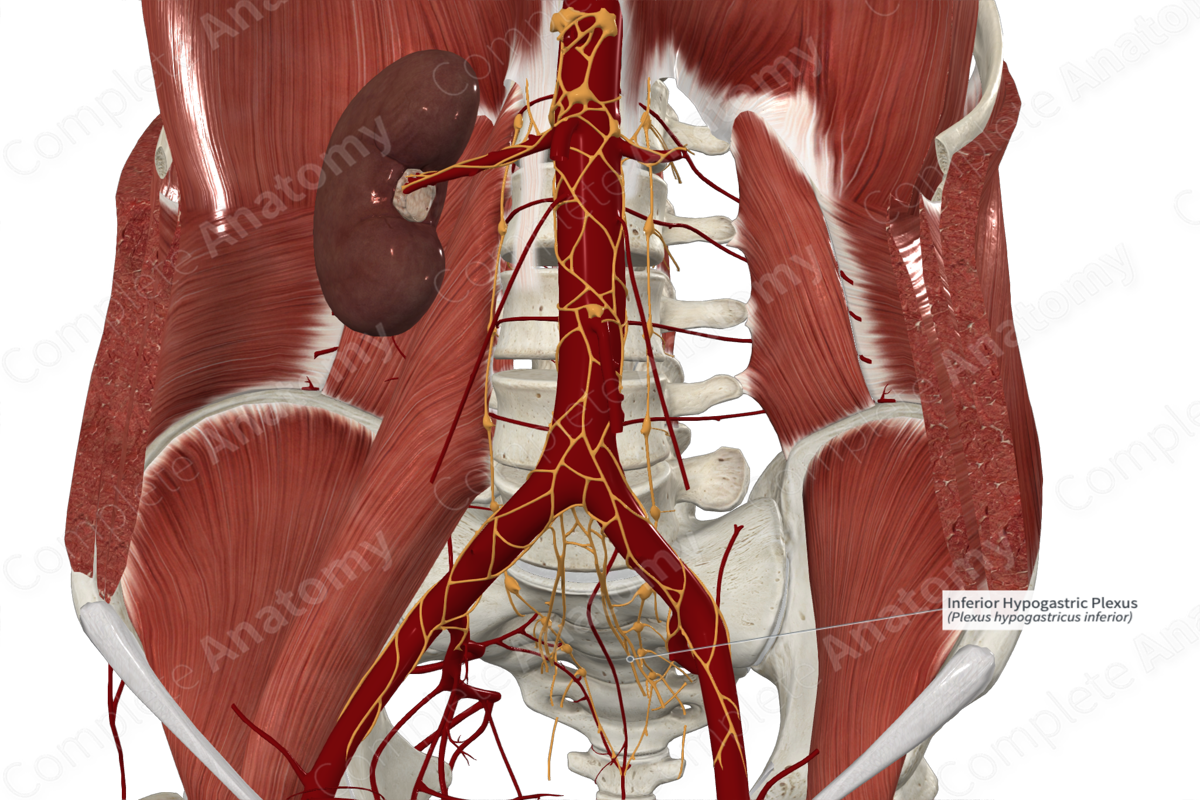
Quick Facts
Sympathetic Contribution: Lumbar splanchnic and sacral splanchnic nerves.
Parasympathetic Contribution: Pelvic splanchnic nerves.
Course: Some axons pass across the pelvic floor to the inferior hypogastric plexus. Others form periarterial plexuses that follow branches of the internal iliac artery. From here the plexus travels across the pelvic floor or along arteries to reach pelvic organs.
Sympathetic Supply: Postganglionic innervation of pelvic organs, genital ducts, perineum, and external genitalia,
Parasympathetic Supply: Postganglionic innervation of pelvic organs, genital ducts, and penis (males).
Contributing Nerves
Some sympathetic preganglionic nerves travel as lumbar splanchnic nerves to synapse in abdominal prevertebral ganglia (aortic, inferior mesenteric, and superior hypogastric plexus). Others descend in the sympathetic trunk to the second and third sacral nerve (S2 and S3) and synapse in corresponding paravertebral ganglia. The latter are called sacral splanchnic nerves. The former, a minority, join the hypogastric nerve to reach the inferior hypogastric plexus and eventually the pelvic viscera. Sacral splanchnic axons join the pelvic splanchnic nerves (preganglionic).
Course
To travel to the inferior hypogastric plexus, sympathetic axons descend or ascend from the pelvis. Preganglionic nerve fibers follow periarterial plexuses formed around the common and internal iliac arteries, and their branches. These may synapse on one of several preaortic ganglia (aortic, inferior mesenteric, or smaller ganglia in the superior and inferior hypogastric plexuses). The combined sacral and pelvic splanchnic nerves take two possible routes to the inferior hypogastric plexus. Either they pass along the pelvic floor or join the periarterial plexuses around branches of the internal iliac artery.
Branches
As autonomic nerves make their way distally from the inferior hypogastric plexus, they follow the arterial supply to pelvic organs, and branch with them, forming subplexuses. These are names according to their arteries: middle rectal, vesical, prostatic, and uterovaginal plexuses. Some efferent fibers travel to the uterus and uterine tubes form the tubal nerve. Sympathetic fibers passing through the inferior hypogastric plexus travel in the pudendal nerve and its perineal nerve branches. These contain parasympathetic fibers whose course involves traveling through the prostatic plexus and following the urethra. It also forms the cavernous nerves.
Supplied Structures
The inferior hypogastric plexus supplies both sympathetic and parasympathetic innervation of bladder and genital ducts, as well as the prostate, urethra, and penis in males, and ovaries, uterus, cervix, and vagina in females.
Visceral sensory fibers from the aforementioned organs are transmitted back towards the CNS through the inferior hypogastric plexus.
List of Clinical Correlates
—Continence
—Sexual function
—Prostatectomy which can lead to erectile dysfunction




